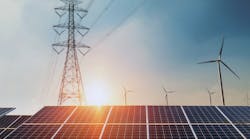If I had to pick the single buzzword that dominated the shows and conferences I’ve been to so far this year, that word would be “electrification.”
The big news out of this year’s Work Truck Show was the major manufacturers—such as Isuzu and Hino—introducing new electric models. The ACEEE Hot Water Forum had session after session on electrification. At the International Builders Show and again at AHR Expo electrification was a major topic for every water heating appliance manufacturer I met.
The push towards electrification is just one strategy being adopted in the fight against greenhouse gas emissions (primarily carbon dioxide). Other strategies include promoting greater efficiencies in everything that consumes fossil fuel (less fuel used means less carbon released) and carbon capture (which faces an uphill struggle due to the expense and complexity of the systems involved).
It's an unfortunate fact that the discussion around climate change—and by extension electrification—has become politicized. I’ve heard legislation promoting electrification characterized as an attack on free energy markets. I’ve even heard it called a conspiracy to surrender America’s competitive economic advantage to foreign rivals.
It seems to me that the strongest arguments against electrification are, first, that if the goal is to decrease carbon emissions, you’re robbing Peter to pay Paul; the electricity for that electric van or that electric heat pump needs to come from somewhere, and that somewhere is probably going to be a utility burning fossil fuels. The second argument is that the current electrical grid doesn’t have the capacity to meet the increased demand electrification will create.
To the first point, according to the US Energy Information Administration, in 2022, about 4,243 billion kilowatt-hours of electricity were generated at utility-scale facilities in the United States. About 60% of this electricity was from fossil fuels, about 18% was from nuclear energy, and about 22% was from renewable energy sources.
60% sounds like a steep mountain to climb, but I have seen two studies (one from the Office of Energy Efficiency and Renewable Energy, one from consultants McKinsey & Company), saying that the goal is possible by 2035. It will involve a huge investment, but thanks to the Inflation Reduction Act and the Bipartisan Infrastructure Law, there’s a lot of money already in the pipeline. A big hurdle will be rezoning land for use as wind and solar farms, but according to the National Renewable Energy Laboratory it will require something less than 1% of the land in the lower 48—an area comparable to the fossil fuel industry’s footprint.
As to the second point, capacity will need to grow by about 40% within roughly the same time frame to meet increased strain on the grid. Yet all the planning and prognosticating seems to have taken that into account. Also, it’s worth noting that you don’t build capacity and then wait for demand to show up—you build capacity to meet demand. As that demand rises it will create its own incentives.
The puzzle has so many pieces: transmission corridors, coal retirement, metering just to name a few. I’m not an expert in anything besides putting together a monthly magazine, but achieving a carbon-zero electrical grid by 2035 sounds unlikely to me. Then again, when Kennedy called for a mission to the moon “in this decade” it was 1962 and most people listening to his speech must have thought that was unlikely. But we made it by July of 1969, with five months to spare.
So, we’ll see what happens. In the meanwhile, it’s a good idea to learn what you can about heat pump water heaters—installation, operation, maintenance, and any rebates you can offer for installing them.


